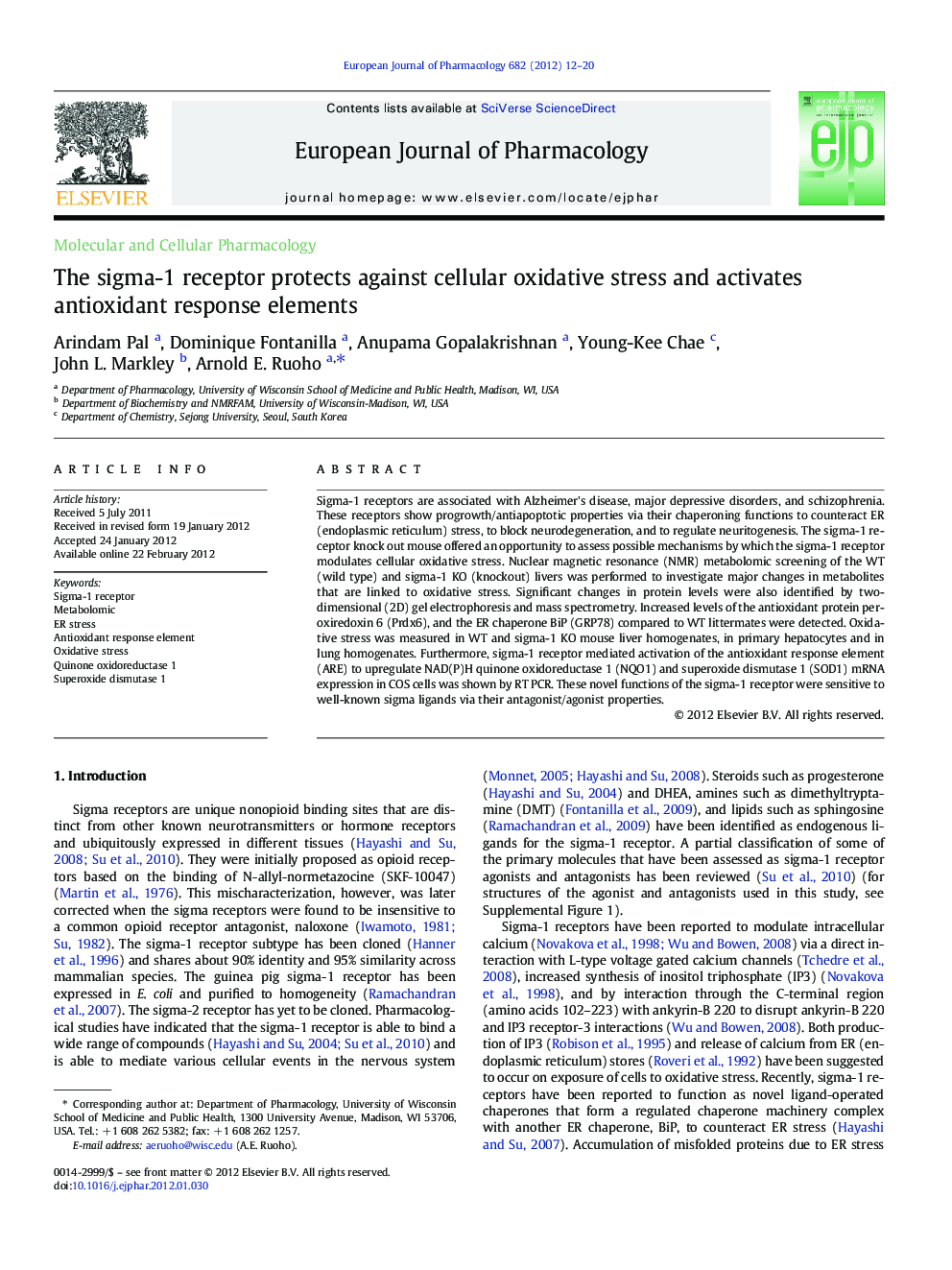| Article ID | Journal | Published Year | Pages | File Type |
|---|---|---|---|---|
| 5829682 | European Journal of Pharmacology | 2012 | 9 Pages |
Abstract
Sigma-1 receptors are associated with Alzheimer's disease, major depressive disorders, and schizophrenia. These receptors show progrowth/antiapoptotic properties via their chaperoning functions to counteract ER (endoplasmic reticulum) stress, to block neurodegeneration, and to regulate neuritogenesis. The sigma-1 receptor knock out mouse offered an opportunity to assess possible mechanisms by which the sigma-1 receptor modulates cellular oxidative stress. Nuclear magnetic resonance (NMR) metabolomic screening of the WT (wild type) and sigma-1 KO (knockout) livers was performed to investigate major changes in metabolites that are linked to oxidative stress. Significant changes in protein levels were also identified by two-dimensional (2D) gel electrophoresis and mass spectrometry. Increased levels of the antioxidant protein peroxiredoxin 6 (Prdx6), and the ER chaperone BiP (GRP78) compared to WT littermates were detected. Oxidative stress was measured in WT and sigma-1 KO mouse liver homogenates, in primary hepatocytes and in lung homogenates. Furthermore, sigma-1 receptor mediated activation of the antioxidant response element (ARE) to upregulate NAD(P)H quinone oxidoreductase 1 (NQO1) and superoxide dismutase 1 (SOD1) mRNA expression in COS cells was shown by RT PCR. These novel functions of the sigma-1 receptor were sensitive to well-known sigma ligands via their antagonist/agonist properties.
Keywords
Related Topics
Life Sciences
Neuroscience
Cellular and Molecular Neuroscience
Authors
Arindam Pal, Dominique Fontanilla, Anupama Gopalakrishnan, Young-Kee Chae, John L. Markley, Arnold E. Ruoho,
